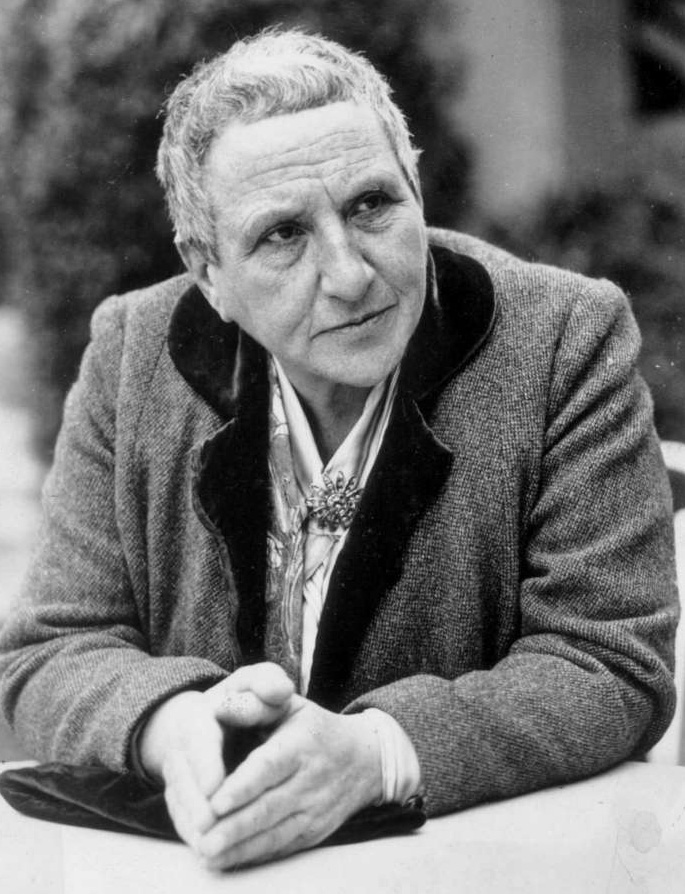Stein, Gertrude (1874-1946), was an American author who introduced a unique style of writing. She influenced many writers—among them Sherwood Anderson and Ernest Hemingway—who were trying to develop new ways to express themselves.

In her writing style, Stein repeated basic words. Her style is exemplified by her statement, “Rose is a rose is a rose is a rose.” Stein felt that such repetition of words helped communicate the feelings that they expressed, as well as depicting the natural behavior of a mind in motion. Stein believed that punctuation and difficult words distracted the reader from these feelings, and so she used little punctuation and simple words. In her fiction, she placed more importance on revealing the feelings of the characters than on telling a story.
Stein was born in Allegheny, Pennsylvania, on Feb. 3, 1874, and graduated from Radcliffe College. She studied under the noted American philosopher William James, and his teaching strongly influenced the writing style that she later developed. See James, William.
In 1903, Stein settled in Paris. Her apartment became a gathering place for many writers, musicians, and painters. Stein was one of the first people to realize the importance of various experimental movements in painting. She encouraged such artists as Henri Matisse and Pablo Picasso in their work. She also became an art critic and collector.
Stein’s best-known book is The Autobiography of Alice B. Toklas (1933). She wrote it about herself from the viewpoint of Alice B. Toklas, her friend and secretary.
Stein’s other works include Three Lives (1909), a book of stories; and Lectures in America (1935), a collection of lectures on literature, painting, and music. She wrote the text for two operas that were composed by Virgil Thomson, Four Saints in Three Acts (1934) and The Mother of Us All (1947). She died on July 27, 1946. Stein’s Operas & Plays was published in 1987.
See also Lost Generation.
